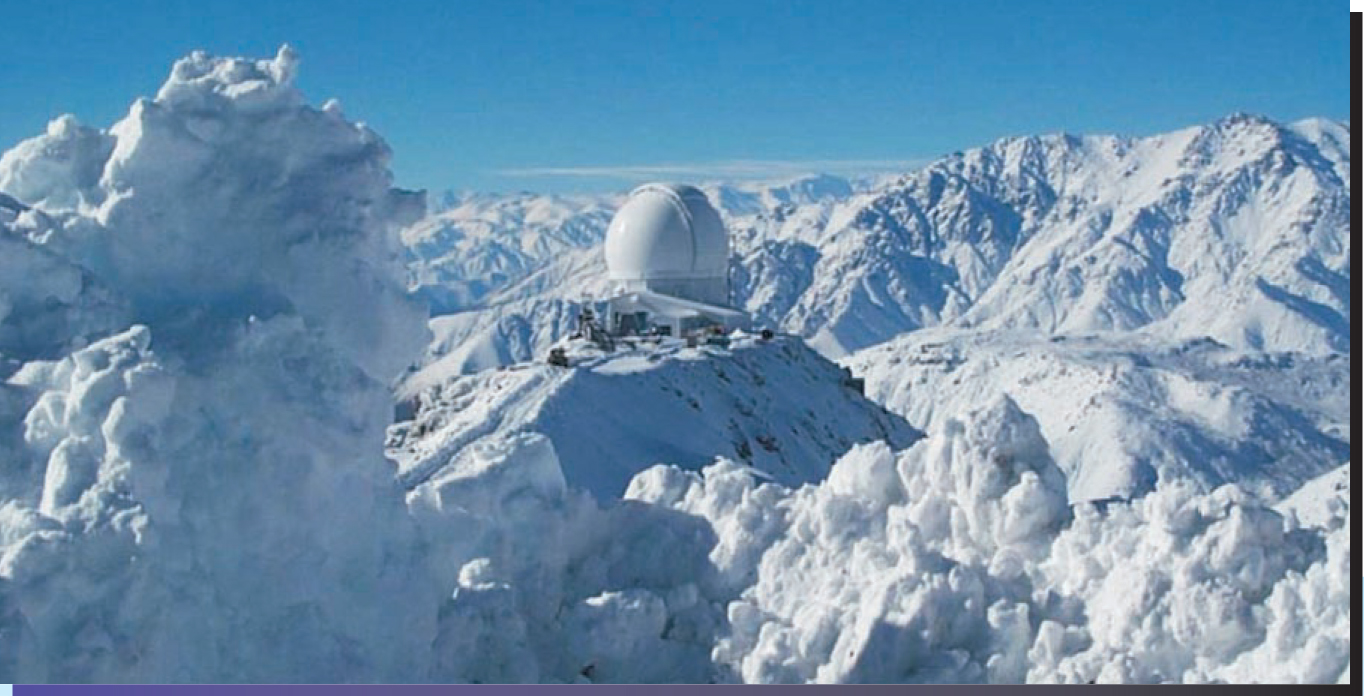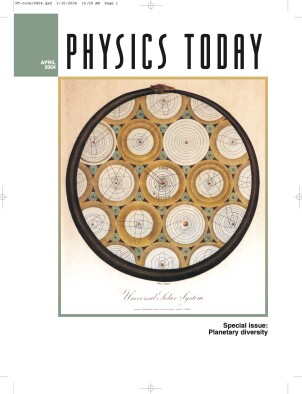Semester Abroad to SOAR in Chile
DOI: 10.1063/1.1752417
Hands-on experience with telescopes and immersion in Chilean culture, without getting behind in science studies—that’s the rare opportunity that the University of North Carolina at Chapel Hill is offering as many as 15 of its undergraduates this fall.
“Studying abroad is usually a problem for science students, especially for physics types, because our curriculum is so lockstep. If students go away, they fall behind,” says astronomer Wayne Christiansen, who, with colleague Gerald Cecil, is organizing UNC’s semester in Chile. Students in the program will take a full course load, with such subjects as cosmic evolution, energy and sustainability, and Spanish, says Christiansen. They can also participate remotely in classes in Chapel Hill; likewise, students at the home campus can attend by video conference the classes held in Chile.
The semester in Chile will revolve around the Southern Astrophysical Research (SOAR) telescope, a 4.1-meter telescope for which a dedication ceremony will take place on 17 April. UNC is a partner in the $32 million SOAR, which is located at an elevation of 2700 meters on Cerro Pachon. The university’s involvement in SOAR, says Cecil, “was sold in part as an opportunity for undergraduates to do research. The [semester abroad] is the first realization of this.”
The UNC students will help fine-tune SOAR. But first they’ll get their hands dirty with Prompt, an array of four off-the-shelf 14-inch telescopes a few kilometers away. “We’ve told [Dan Reichart, the UNC astronomer who is developing Prompt] that he can view our students as a resource. The students will help us get the array set up. That’s the grungy research part,” says Cecil.
When tipped off by Swift, a NASA satellite that is supposed to be launched this year, both SOAR and Prompt will point to gamma-ray bursters. The smaller, more agile Prompt telescopes will be programmed to slew automatically to a GRB within 5–10 seconds of notification and to image it at different wavelengths. SOAR will take better images as well as optical and infrared spectra, but will require a person to decide to preempt other observations and will take perhaps 5 to 10 minutes to get to a given GRB.
In addition to debuggifg, students will do their own research projects. Using SOAR, for example, they could study internal dynamics of active galaxies with Cecil or measure redshifts with Christiansen to determine if radio galaxies belong to a certain supercluster.
In Chile, students will split their time between the telescope sites in the mountains and the coastal town of La Serena, where SOAR operations are based. They will also take field trips to learn about the country’s wildlife, glaciers, and active volcanoes.
About half of the students signed up for the SOAR semester are physics or astronomy majors; the rest have astronomy as a minor and are majoring in fields such as international studies and political science. Students will pay a total of about $11 000 apiece to participate.
The program will be augmented by $10 000 through an endowment from Lucius E. Burch III, an entrepreneur and a 1963 UNC graduate. “These seminars are an investment in the creativity of faculty and students. They are about joining undergraduate teaching and research,” says Jim Leloudis, associate dean for honors in UNC’s college of arts and sciences. He ticks off street life in Beijing, food and culture in Burgundy, and plate tectonics in California as examples of previous Burch field research seminars. The university runs a handful of the seminars each year. The upcoming physics and astronomy semester in Chile, he adds, “could be a one-time offering. But if it goes well, we may want to put it on a more permanent footing.”

The Southern Astrophysical Research telescope is the linchpin for an upcoming semester abroad program from the University of North Carolina at Chapel Hill.
SERGIO FRANCO

More about the Authors
Toni Feder. American Center for Physics, One Physics Ellipse, College Park, Maryland 20740-3842, US . tfeder@aip.org
